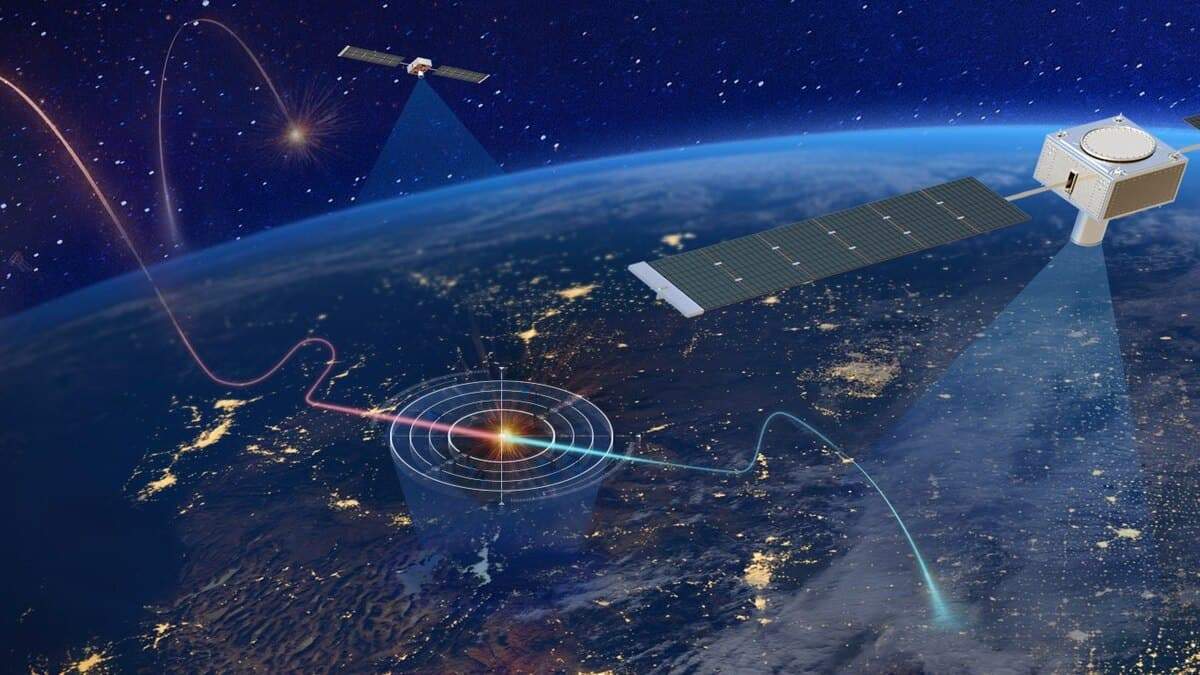These eight satellites will track hypersonic weapons

The Space Development Agency wants to put an initial batch of satellites capable of tracking hypersonic weapons on orbit in fiscal 2022, according to a draft request for proposals the agency released May 11.
The draft comes as SDA prepares to launch its first tranche of about 20 satellites in FY22, the first step toward its goal of hundreds of interconnected satellites operating in low Earth orbit. The agency is taking a spiral development approach, launching additional satellites with increasingly advanced capabilities in two-year tranches.
The second tranche, to be launched in FY24, will place 150 satellites on orbit.
According to the draft RFP, the agency wants a contractor to design and build eight Wide Field of View, or WFoV, satellites with infrared sensors capable of demonstrating an initial hypersonic weapon-tracking capability.
The eight satellites will also be able to plug into SDA’s transport layer satellites, which will establish a space-based mesh network with optical intersatellite cross links. That will allow data collected by the WFoV sensors to flow from satellite to satellite until it is disseminated over tactical data links to the appropriate system.
The agency released an RFP on May 1 for the first 10 satellites that will make up the transport layer. Those satellites are also set to launch in FY22.In addition, SDA wants to launch Medium Field of View satellites in mid-FY23 focused on technologies needed for additional performance.
Here are the performance goals laid out for the eight WFoV satellites in the draft RFP:
Develop and deliver space vehicles integrated with infrared sensors that have sufficient sensitivity and processing to detect hypersonic vehicles from low Earth orbit.Characterize performance of satellite-to-satellite and satellite-to-ground communication paths.Integrate with a proliferated transport layer to directly provide tracking information over tactical data links.Demonstrate interoperability between satellites provided by different vendors.Assess how on-board processing, communications infrastructure and advanced algorithms can enable more efficient use of communications bandwidth.Develop a concept of operations for a global tracking capability.Verify functional and performance requirements to inform future trade studies on communications; space and ground processing; and the numbers, types and capabilities of space-based sensors needed for a full global capability.
Responses to the draft are due May 29.
The release comes shortly after the Defense Advanced Research Projects Agency announced it plans to launch its first Blackjack satellite into orbit later this year, with more to follow in 2021. With Project Blackjack, DARPA seeks to demonstrate the value of low-Earth orbit satellites for the Defense Department. The small satellites will carry advanced technologies that will demonstrate space-based mesh networks and constellation autonomy.
SDA leadership previously said the agency will build off the lessons learned from Blackjack.
Photo: Concept art from Northrop Grumman shows a potential architecture for using satellites to track hypersonic missiles. (Northrop Grumman)




